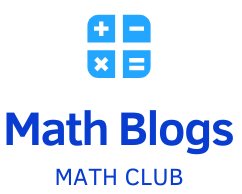Assess Your Level of Expertise
The first step in choosing the right math software is to assess your level of expertise in mathematics. If you are a beginner or a student working on basic algebra, geometry, or statistics, you’ll likely need a simpler tool with a user-friendly interface that focuses on foundational concepts. In contrast, if you are a professional mathematician or someone working on more advanced fields like differential equations, number theory, or machine learning, you’ll need software with more sophisticated capabilities, including symbolic algebra, numerical methods, and advanced graphing tools.
Consider the Specific Mathematical Tasks You Need to Perform
Different math tools excel at different tasks, so it’s important to choose software that aligns with the specific tasks you need to perform. If you are mainly focused on graphing and visualizing mathematical functions, a tool like Desmos or GeoGebra is an excellent choice, as these tools provide real-time graphing capabilities and allow you to manipulate equations interactively.
Evaluate the Ease of Use and User Interface
Ease of use is another critical factor to consider when selecting math software. For students or beginners, it’s important to choose software with a user-friendly interface that allows for quick learning and experimentation. Tools like GeoGebra, Desmos, and Khan Academy are designed with ease of use in mind, offering simple, intuitive interfaces that make it easy to perform basic tasks and visualize mathematical concepts.
Consider Platform Compatibility and Availability
Another important consideration when choosing math software is platform compatibility. Some tools are available exclusively as desktop applications, while others may be cloud-based or offer mobile apps for on-the-go access. It’s essential to choose software that is compatible with the devices you use most often. If you prefer working on a laptop or desktop, software like MATLAB, Wolfram Mathematica, or SageMath can be great options, as they are powerful, desktop-based applications.
Determine the Budget and Licensing Model
Math software comes in a variety of pricing models, from free open-source tools to paid premium software. As a student or someone on a tight budget, free or open-source options are often the best choice. Tools like GeoGebra, Desmos, Microsoft Math Solver, and SymPy are all free to use and provide robust functionalities for a variety of mathematical tasks. These tools are ideal for students who need to perform basic to intermediate mathematical computations without spending money on expensive software.
Check for Community Support and Resources
Having access to a strong community of users and resources is crucial when learning or working with math software. Community forums, user guides, and online tutorials can help you overcome challenges and troubleshoot issues as they arise. When evaluating math software, it’s helpful to check for available support resources and whether the tool has an active user community.
Look for Integration with Other Tools
For professionals or students working in interdisciplinary fields like data science, engineering, or physics, it may be necessary to choose software that can integrate with other tools or programming languages. For example, SymPy integrates seamlessly with Python, allowing you to use it in conjunction with other libraries like NumPy and SciPy for more advanced numerical computations.
Conclusion
Choosing the right math software or tool can significantly impact your ability to learn, solve problems, and work efficiently. By evaluating your level of expertise, the tasks you need to perform, ease of use, platform compatibility, budget, community support, and integration capabilities, you can select the software that best suits your needs. Whether you’re a student, a professional, or someone looking to enhance your mathematical skills, the right software can help you tackle complex problems, visualize concepts, and make mathematical work more accessible and manageable. With the wide range of free and paid options available, there’s a math tool for every level and requirement.




